Are There Any Endangered Animals In The Us
When y'all think of endangered species, elephants, tigers, and rhinos might come up to mind. While there are hundreds of species around the globe that are threatened with extinction and deserve our attending, there are many animals in our ain lawn with dwindling populations. Learning well-nigh these creatures is of import to aiding in their conservation efforts, whether that means donating to organizations focused on endangered species in the U.S. or telling your representatives to laissez passer laws to assistance protect vulnerable species.
There are more 1,300 threatened and endangered species in the country today, but here are some of the most endangered animals in the U.S.
1. Florida Panther

The Florida panther has been listed as an endangered species since 1967 and now lives in merely five% of its onetime range. This panther used to roam much of the southeastern U.S. but is now only found in southern Florida. There are only about 100 to 200 panthers left. They were heavily hunted and perceived as pests before being listed equally endangered; today, their primary threats are habitat loss and collisions with vehicles.
Several organizations are working toward Florida panther conservation, including Defenders of Wildlife, The Florida Panther Protection Program, and The Conservation Fund, past preserving existing panther habitat, extending public outreach, educating people on coexisting with the panthers, and establishing funds for continuing conservation efforts in the hereafter.
two. Florida Manatee
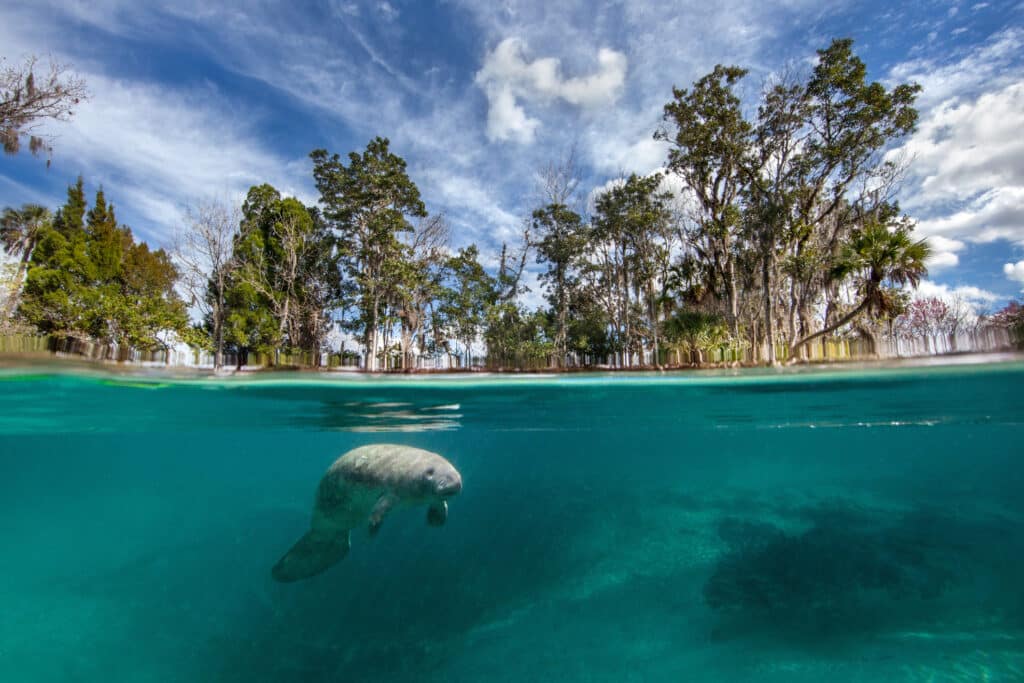
Another Florida-based species, the Florida manatee is establish off the coasts of Florida and has been listed as endangered since 1973. Boat strikes are a superlative threat to manatees, but climate modify has caused caused problems for these gentle "bounding main cows." H2o temperature fluctuations put stress on the species, and increasing rates of deadly algal blooms are besides to arraign. In contempo years, sea grass scarcity has led to starvation for these animals.
Currently, Florida is piloting an unprecedented feeding program, as over one,000 manatees died of starvation in 2021 alone. In the 2021-22 winter season, manatee deaths were labeled every bit an Unusual Mortality Event due to the high number of deaths. The Marine Mammal Commission has been in talks with government officials at every level to protect the manatees, from establishing slower boat speeds to stopping the harassment, such as touching or swimming almost, of manatees.
3. Ruby Wolf
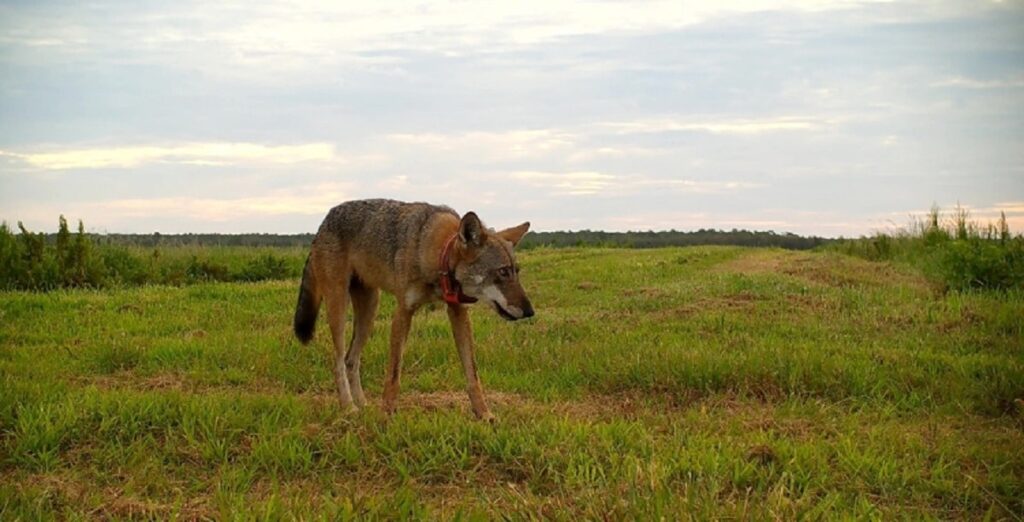
There are only about xv to 17 ruddy wolves left in the wild in the U.S. In 1987, they were considered extinct, merely a captive breeding program revived the species. Conservation efforts brought the population to over 100 animals around 2012, but by 2018, it dropped to forty and now sits at less than ii dozen.
The U.S. Fish and Wild animals Service has been increasing the size of its Species Survival Programme (SSP) for cherry wolves, and the final Recovery Plan is expected to exist finalized in 2023.
4. California Condor

California condors are the largest bird in North America. In the 1980s, California condors nearly went extinct due to poisoning from lead and consuming DDT, a pesticide that was banned in 1972. A successful captive breeding recovery program increased numbers from six to 223 in the early 2000s. Today, there are over 400 California condors, but they nevertheless are threatened past man-related deaths, such as collisions with power lines.
U.S. Fish and Wild animals Service has partnered with several organizations and entities, including the National Park Service, Bureau of State Direction, U.S. Forest Service, the Yurok Tribe, several zoos, multiple state wild fauna departments, the federal regime of Mexico, and multiple conservation organizations to institute The California Condor Recovery Program. The program is working to establish self-sustaining populations of wild California condors.
v. Black-Footed Ferret
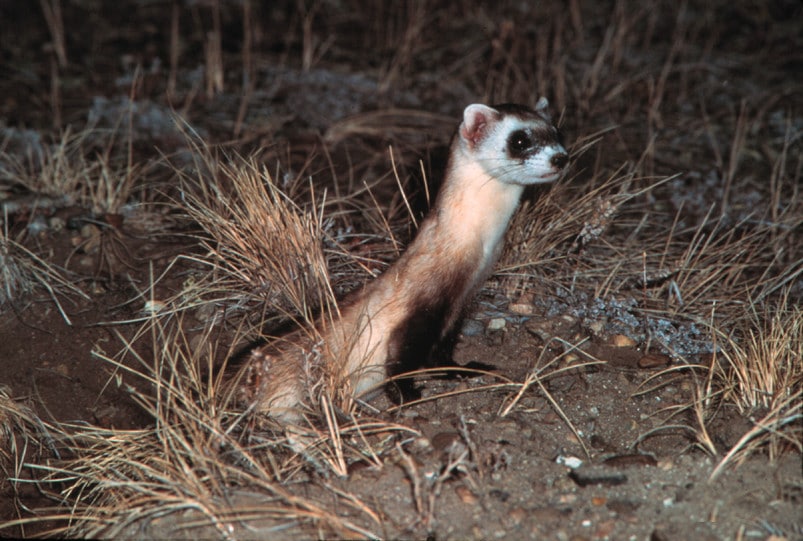
The only ferret species native to Due north America, there are just about 370 wild black-footed ferrets left in the wild. These creatures utilise prairie dog burrows across grasslands for their shelter, simply increasing habitat loss due to agronomics has injure the population. They eat prairie dogs, too, and prairie-dog eradication efforts have depleted their food source. They are too susceptible to diseases.
Ethnic tribes, federal agencies, zoos, and conservation organizations accept worked toward conserving this species' numbers. The Nature Salvation works with private landowners to protect prairie dogs, and therefore black-footed ferrets, and The Centre for Biological Multifariousness works to protect the species against further agricultural and oil developments and pesticide use.
six. Loggerhead Sea Turtle
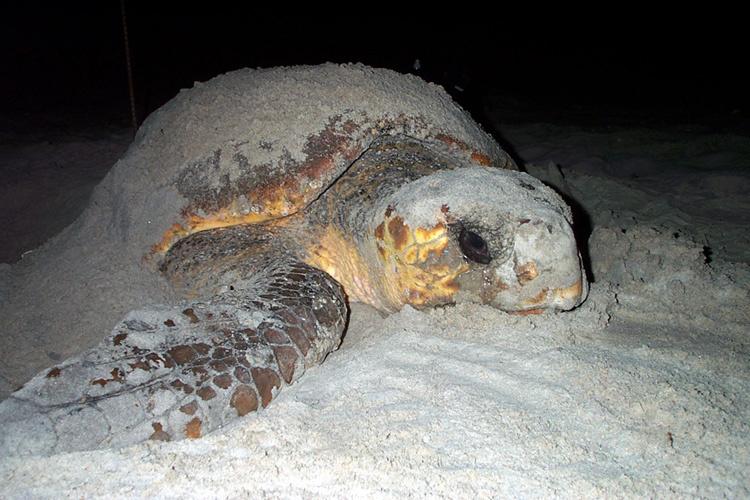
Loggerhead sea turtles in the U.S. mostly call Florida's coasts dwelling house, only rapid evolution has been their downfall. Their nests, laid on beaches, are ofttimes destroyed, or they may be harrassed by humans while trying to nest. They are also ofttimes defenseless as bycatch by commercial fishers. These turtles are essential to healthy marine ecosystems, particularly coral reefs and seagrasses.
NOAA Fisheries works to protect loggerhead ocean turtles by creating disquisitional habitat areas, implementing changes to fishing gear to minimize run a risk of bycatch, monitoring populations, and establishing international treaties to protect the species. Loggerhead Marinelife Centre rehabilitates stranded loggerheads, which happens frequently during nesting flavor.
vii. San Joaquin Kit Trick
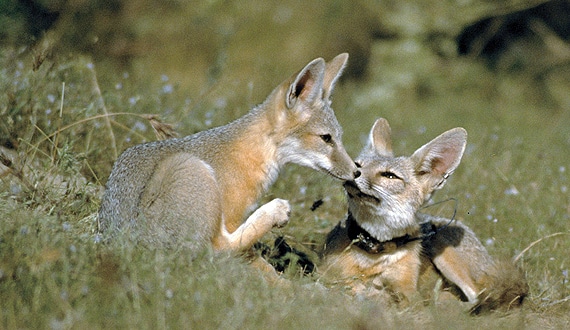
Like black-footed ferrets, San Joaquin kit foxes have suffered from habitat loss every bit land is turned into farms. Rodenticides, too, have led to population refuse for these mammals. These kit foxes get much of their water from prey, but the smaller mammals they feed on have declined from pesticide use. The San Joaquin kit fox is the smallest fox in Due north America.
The Centre for Biological Diversity has been petitioning for critical habitat designation in San Joaquin Valley for the kit fob since 2010 and has sued against developments that would disrupt the animals' habitat. The organization besides works against harmful pesticide utilise that harms kit foxes.
eight. Mississippi Gopher Frog

This amphibian has been enlisted as endangered since 2001, and in that location are merely well-nigh 100 to 250 members of the population left in the wild. Habitat loss, illness, and invasive species have led to this frog'southward decline. Their range has come to just 3 little ponds in Mississippi, but a new, proposed town could lead to their demise.
The Nature Conservancy is transferring some tadpoles to its Old Fort Bayou Preserve to protect the species, and The Gulf Restoration Network has established designated Mississippi gopher frog habitat. The Gulf Restoration Network is also working with other conservation organizations to come to an agreement with the land developer to protect one of the frogs' final breeding ponds. U.S. Fish and Wildlife Service has designated about 7,000 acres of land in Mississippi and Louisiana to heave the population.
9. Atlantic Bluefin Tuna
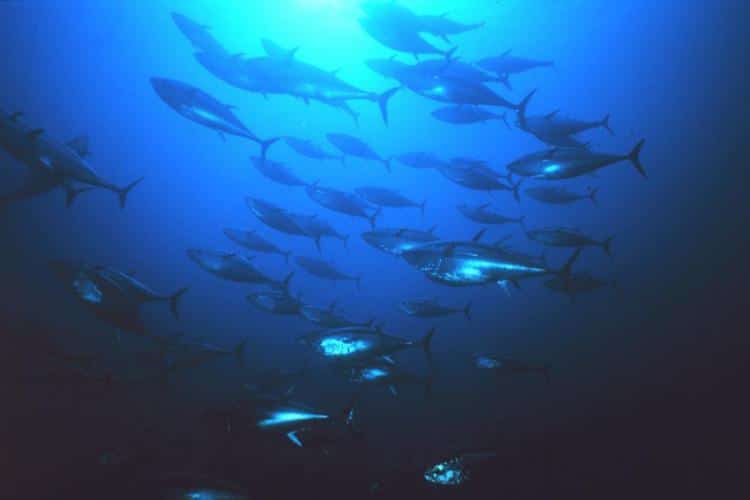
Bluefin tuna is 1 of the priciest catches of fish out in that location and is often sought after for sushi. They are huge, weighing up to 2,000 pounds and spanning most xv feet long. The more their population decreases, the higher prices they fetch. But these massive fish are disquisitional for marine systems as one of the top points in the food chain.
Currently, at that place are regulations that forestall fishing for Atlantic bluefin tuna in the Gulf of United mexican states, where they spawn. Fishers may crave permits to catch these fish, and NOAA has established quotas, size limits, gear restrictions, and area closures related to fishing for Atlantic bluefin tuna. Because these fish are migratory, more international collaboration is needed to protect their population.
x. Woodland Caribou

The woodland caribou population, specially the southern Selkirk subpopulation, has been listed as endangered since 1984. Deforestation for timber and fossil fuel mining and climate change has caused the population to decline.
U.South. Fish and Wildlife Service designated 30,010 acres in Washington and Idaho for woodland caribou. Conservation Northwest is also working with Indigenous tribes and conservation organizations in Canada to institute a recovery plan for the species.
Based in Los Angeles, Paige is a author who is passionate nearly sustainability. Aside from writing for EcoWatch, Paige also writes for Insider, HomeAdvisor, Thrillist, EuroCheapo, Eat This, Not That!, and more. She earned her Bachelor'due south degree in Journalism from Ohio Academy and holds a certificate in Women's, Gender and Sexuality Studies. She as well specialized in sustainable agriculture while pursuing her undergraduate caste. When she'due south not writing, Paige enjoys decorating her apartment, enjoying a cup of coffee and experimenting in the kitchen (with local, seasonal ingredients, of course!).
Source: https://www.ecowatch.com/most-endangered-animals-united-states.html
Posted by: hyerlorge1995.blogspot.com

0 Response to "Are There Any Endangered Animals In The Us"
Post a Comment